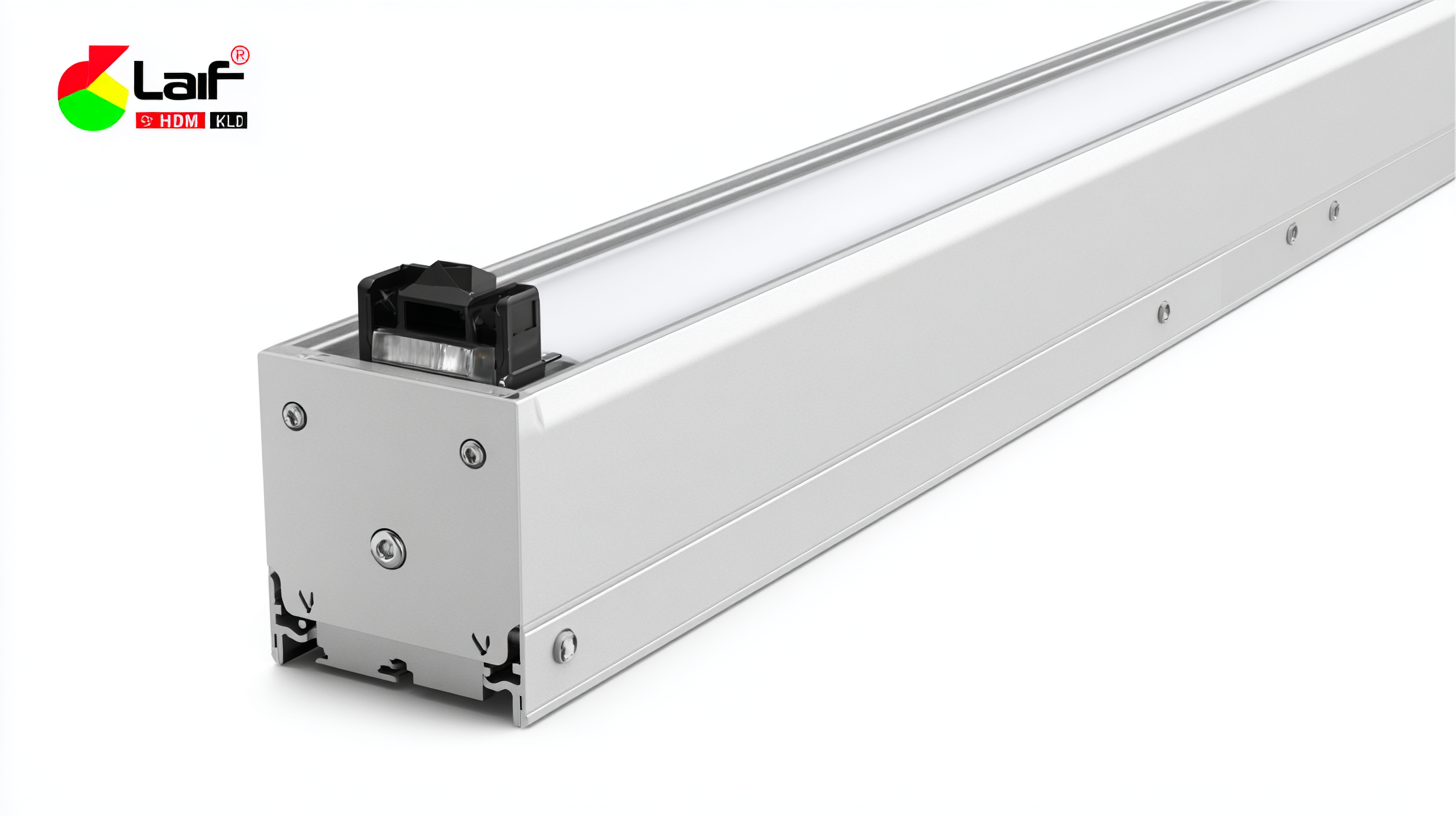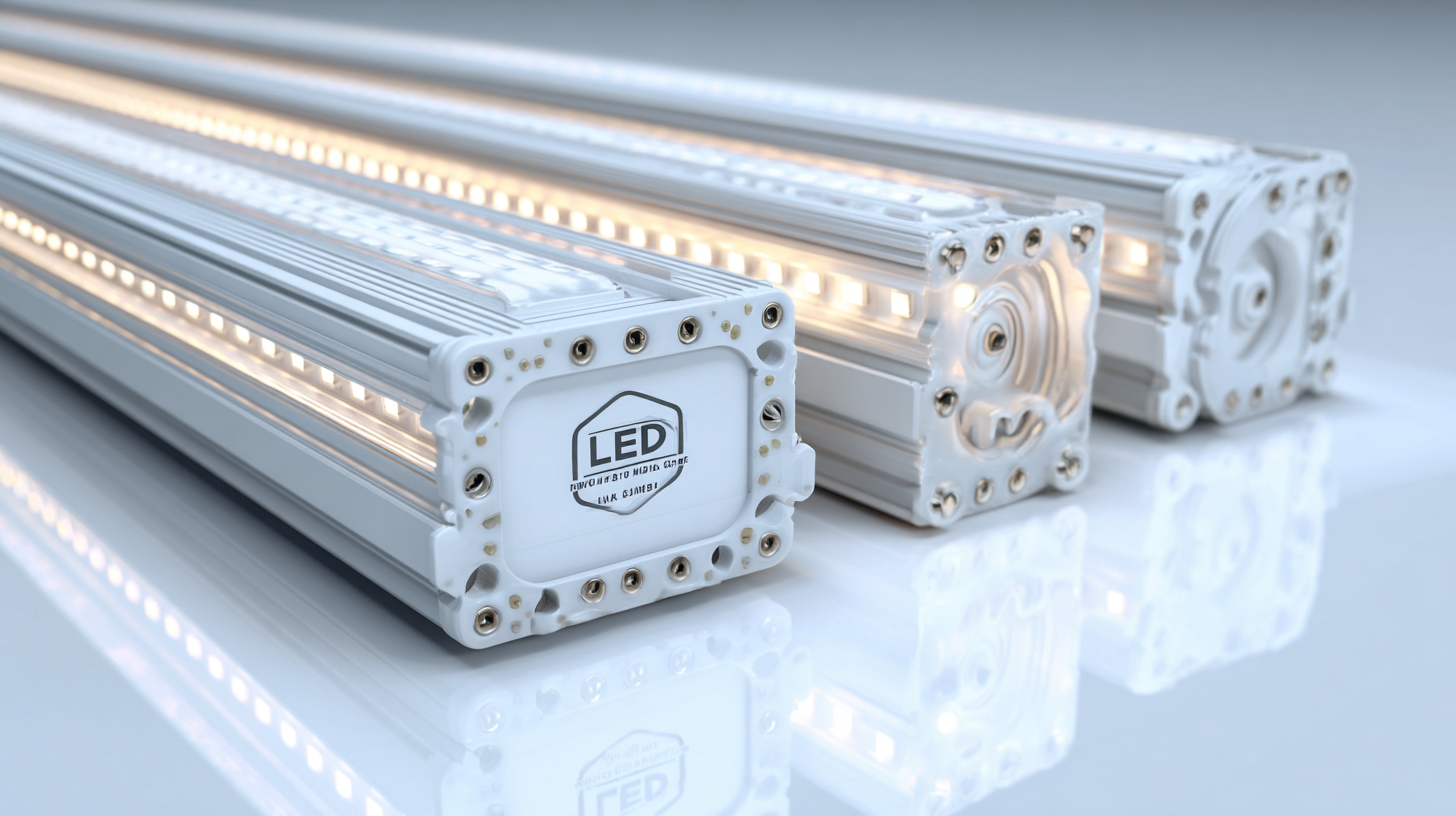What Makes the Best LED Linear Light: A Comprehensive Guide to Types and Benefits
In recent years, LED linear lights have become increasingly popular due to their versatility and energy efficiency. However, with a plethora of options available in the market, selecting the best LED linear light can be an overwhelming task. This comprehensive guide aims to demystify the various types and benefits of LED linear lights, ultimately aiding consumers in making informed decisions. We'll explore key factors to consider when searching for high-quality suppliers, ensuring that you choose products that not only meet your lighting needs but also adhere to industry standards. Furthermore, we will delve into the top strategies for identifying the ideal type of LED linear light based on specific applications, enhancing the overall functionality and aesthetic of your space. Whether you are a homeowner, a contractor, or a business owner, understanding the nuances of LED linear lights will empower you to enhance your environment with effective and sustainable lighting solutions.

Understanding Different Types of LED Linear Lights and Their Applications
LED linear lights have become increasingly popular due to their versatility and efficiency, making them a staple in various applications. In 2023, the global LED lighting market is valued at $4.624 billion and is projected to grow at a compound annual growth rate (CAGR) of 6.3% through 2033. This growth reflects the technological advancements in lighting solutions as well as the rising demand for energy-efficient alternatives across residential, commercial, and industrial sectors.
Understanding the different types of LED linear lights is essential for selecting the right solution for specific needs. For example, LED linear lights can be categorized into various types including surface-mounted, recessed, and pendant fixtures. Each type serves distinct applications, whether it be for ambient lighting in homes, task lighting in offices, or specialized fixtures in industrial settings. Reports indicate that the industrial segment continues to thrive, driven by innovations in lighting technology that enhance visibility and safety at work sites, further contributing to the anticipated market growth.
With the LED lighting market rapidly evolving, it's crucial for end-users to stay informed about the latest trends and product options available. The understanding of different LED linear light types and their applications plays a vital role in maximizing their benefits, ultimately leading to better energy efficiency and cost savings in the long run.
What Makes the Best LED Linear Light: A Comprehensive Guide to Types and Benefits
| Type of LED Linear Light | Key Features | Applications | Benefits |
|---|---|---|---|
| Standard LED Linear Lights | Energy-efficient, long lifespan, available in various lengths | Offices, retail spaces, warehouses | Reduced energy costs, minimal maintenance |
| Dimmable LED Linear Lights | Brightness adjustment capabilities, compatible with various dimmers | Restaurants, theaters, residential areas | Enhanced ambiance, energy savings when dimmed |
| Color Changing LED Linear Lights | RGB color options, remote control capabilities | Event lighting, entertainment venues, home theaters | Versatile lighting effects, creative design possibilities |
| Waterproof LED Linear Lights | IP67 rated, durable housing | Outdoor installations, wet areas, swimming pools | Suited for harsh environments, safety assurance |
| High-Bay LED Linear Lights | High lumen output, designed for high ceilings | Factories, gyms, large retail areas | Bright illumination, energy-efficient alternatives to traditional high-bays |
Key Benefits of Using LED Linear Lights in Various Settings
LED linear lights have become increasingly popular in various settings due to their numerous benefits. One of the key advantages of LED linear lights is their energy efficiency. According to a report by the U.S. Department of Energy, LED lighting can use up to 75% less energy than incandescent lighting while lasting 25 times longer. This significantly reduces both energy consumption and maintenance costs, making them an ideal choice for commercial and residential environments alike.
Another important benefit is their versatility and adaptability. LED linear lights can be easily integrated into different design aesthetics and applications, ranging from office spaces to retail environments. They provide uniform illumination, enhancing the overall ambiance and functionality of a space. Moreover, recent advancements in LED technology, such as Mini LED, further improve performance, offering higher resolution and better color accuracy, which is particularly beneficial in settings that require precise lighting control. This adaptability ensures that LED linear lights meet a variety of lighting needs while contributing to improved visual comfort and productivity.
Common Issues Faced with LED Linear Light Types and Solutions
When it comes to LED linear lights, users often encounter common issues that can affect performance and satisfaction. One prevalent concern is the compatibility with existing fixtures, particularly when replacing outdated fluorescent tubes. Research indicates that many environments still rely on T8 fluorescent lights, yet a significant number of available LED replacements may not fit properly or deliver the desired light quality. A recent study reveals that effective installation strategies and careful selection of LED products can mitigate these compatibility issues, ensuring a smoother transition for commercial and residential spaces alike.

Another challenge often mentioned is the susceptibility of LED linear lights to color shift over time. Factors such as the quality of materials and manufacturing processes play crucial roles in this degradation, impacting the user's experience. According to comparative efficiency studies, properly selected LED units not only consume less energy but also provide stable color temperatures throughout their lifespan, making them a superior choice for sustainable lighting. Users should prioritize products backed by rigorous testing and high-quality components to avoid these common pitfalls and maximize their lighting investment.
Comparing Energy Efficiency Among Various LED Linear Light Designs
 When selecting LED linear lights, energy efficiency is a crucial factor to consider.
Different designs can have significant impacts on energy consumption, with some units offering better performance than others. For instance, LED fixtures that utilize advanced optical designs tend to provide higher lumen output per watt, maximizing brightness while minimizing energy usage.
When comparing various types, look for models that emphasize high efficacy ratings, as these will offer the best balance between light output and power consumption.
When selecting LED linear lights, energy efficiency is a crucial factor to consider.
Different designs can have significant impacts on energy consumption, with some units offering better performance than others. For instance, LED fixtures that utilize advanced optical designs tend to provide higher lumen output per watt, maximizing brightness while minimizing energy usage.
When comparing various types, look for models that emphasize high efficacy ratings, as these will offer the best balance between light output and power consumption.
Tips for enhancing energy efficiency include:
- Opting for dimmable LED options, which not only allow users to control brightness but also reduce energy consumption when full lighting isn't necessary.
- Using LED linear lights with built-in sensors that adjust based on ambient light levels, further optimizing energy savings.
- Regularly maintaining fixtures, such as cleaning the lenses, which can also improve light output and efficiency, ensuring that your space remains well-lit without excessive energy use.
Tips for Choosing the Right LED Linear Light for Your Needs
When selecting the right LED linear light for your needs, it's essential to consider several factors that align with both functionality and aesthetics.
According to industry reports, effective lighting should not only enhance the visual appeal of a space—such as a dining room or kitchen—but also support its intended use.
For instance, in a dining area, layered lighting that combines ambient, task, and accent elements can create an inviting atmosphere while ensuring sufficient illumination for meals and gatherings.
In kitchens, particularly over islands or counter areas, experts recommend choosing LED linear lights that offer flexibility in brightness and color temperature.
A recent study highlighted that adjustable lighting can increase the efficacy of food preparation areas by up to 30%, making them not only safer but also more enjoyable to use.
Furthermore, for smaller spaces, the right linear lights can help to make the area feel larger and more open; bright, even lighting minimizes shadows and creates a welcoming vibe.
When selecting LED options, prioritizing energy efficiency—often rated by lumens per watt—will also contribute to reduced energy bills over time.
